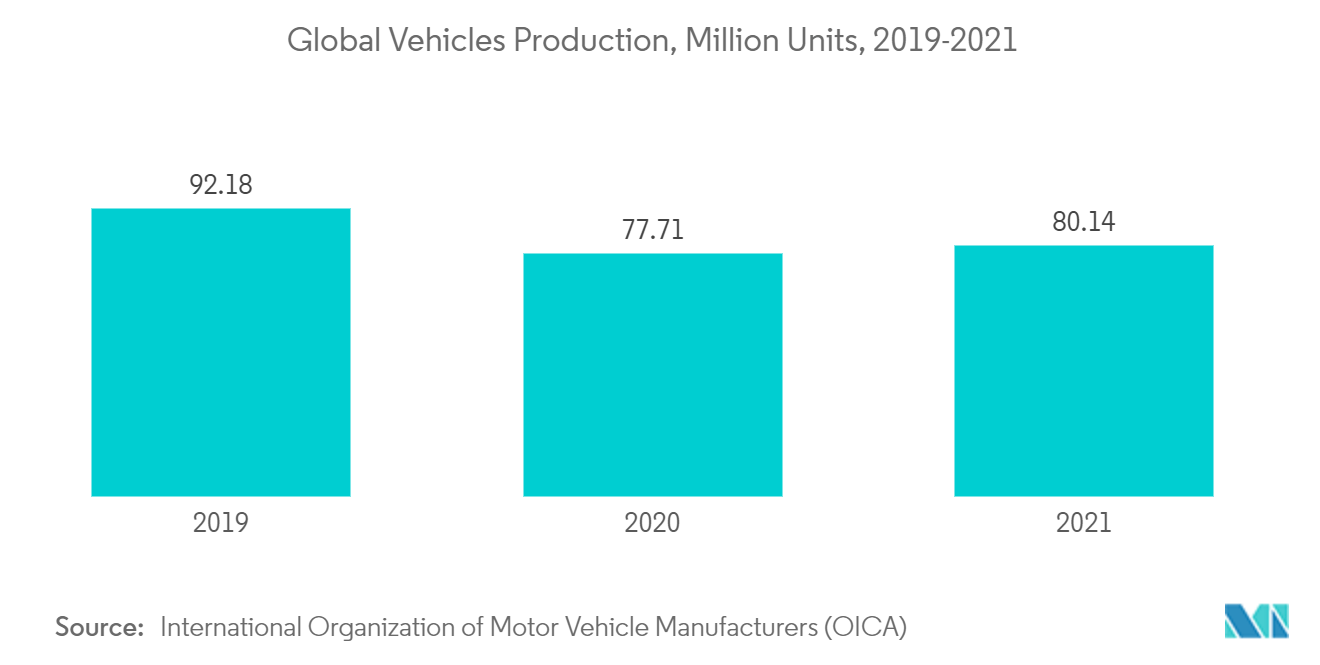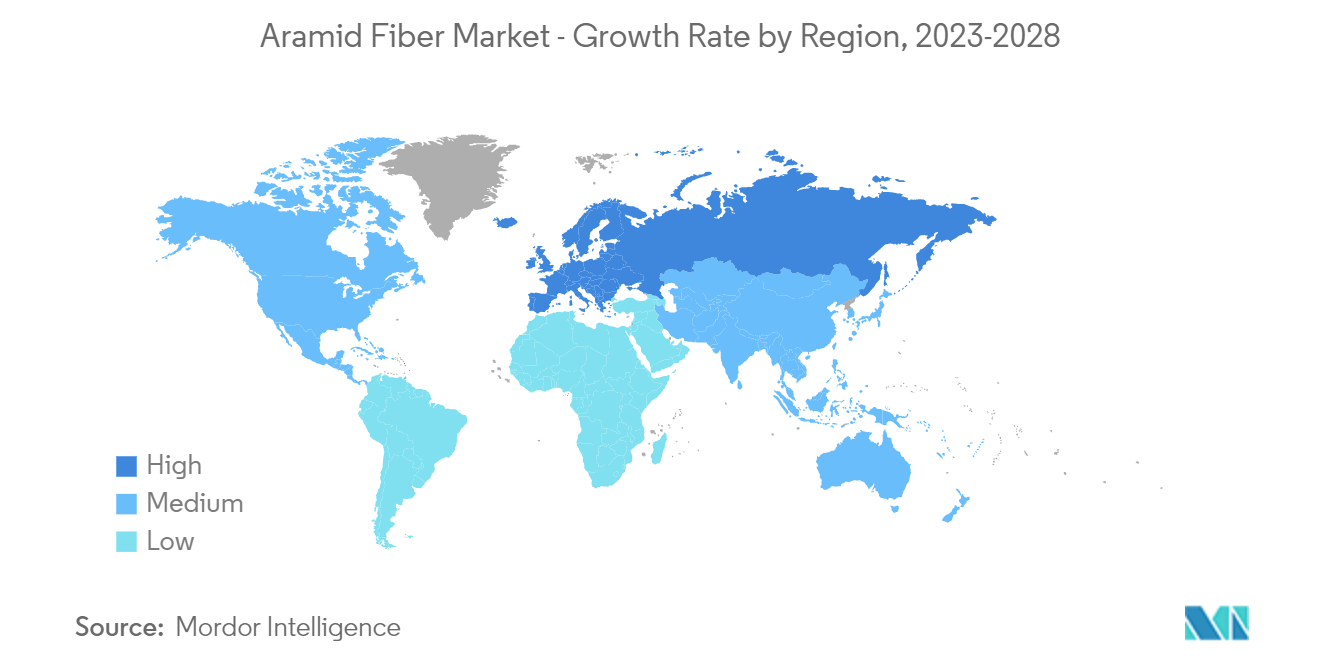Market Trends of Aramid Fiber Industry
This section covers the major market trends shaping the Aramid Fiber Market according to our research experts:
Increasing Demand from Automotive Industry
- In the automotive industry, aramid fibers are used to make materials that reinforce tires, turbocharger hoses, powertrain parts, belts, brake pads, gaskets, clutches, seat fabrics, electronics, seat sensors, and materials for hybrid motors.
- Furthermore, due to their high thermal resistance, aramid fibers are ideal for the production of heat shields and under-bonnet applications.
- In recent years, there has been a shift toward lightweight automobiles. Due to this, car manufacturers are designing lighter vehicles by replacing metal with composites based on aramid fiber to make them light, tough, and recyclable. The growing demand for lightweight vehicles is favoring the aramid fiber market.
- Automobile manufacturers are shifting from steel or aluminum to composite materials, which are essential to reduce vehicle weight and achieve the cost efficiency of highly automated production cycles. Some of the major companies, such as BMW, Mercedes-Benz, McLaren, Chevrolet, and Lamborghini, have started using materials such as carbon fiber and titanium alloys to make vehicles lightweight and fuel-efficient.
- For instance, BMW partnered with German carbon fiber producer SGL Group with an investment of approximately USD 1 billion. Apart from BMW, another German automobile manufacturer, Audi, uses carbon fiber to produce the rear wall of the space frame for its A8 luxury sedan. The carbon fiber is 50% lighter in weight than its metallic predecessor.
- Aramid fibers find major applications in automobile racing events. They are becoming a major alternative for fiberglass-reinforced plastic in racing automobiles, as they do not shatter and leave debris in the event of a crash.
- The global automotive industry witnessed a downfall in the COVID era but has gained momentum in more recent times. According to the International Organization of Motor Vehicle Manufacturers (OICA), around 80.14 million vehicles will be produced globally in 2021, compared to 77.71 million in 2020.
Because of this, the above factors are likely to have a big effect on the market in the next few years.

Europe Region to Dominate the Market
- Germany leads the European automotive market, with 41 assembly and engine production plants that contribute to one-third of the total automobile production in Europe. Germany is one of the most important places for the automotive industry to make things. It is home to a wide range of manufacturers, including those who make equipment, materials, and parts; engines; and those who put the whole system together.
- According to the OICA, the total number of cars and light commercial vehicles (LCV) produced in Germany amounted to about 3.74 million units in 2020 and reached 3.31 million units in 2021, with a decline rate of 13%. The country has been witnessing this decline in automotive production over the past few years. This is mostly because of the high costs, the move of production to other countries (like China), and the new WLTP emission control rules, which made it hard for many companies to register their new products because they couldn't meet the requirements.
- Germany, being one of the leading manufacturing bases for the aircraft industry, is home to manufacturers from different segments, such as equipment manufacturers, material and component suppliers, engine producers, and whole system integrators. Aerospace is a key industry in Germany, according to the Federal Ministry of Economic Affairs and Energy. It has a strong industrial core and is expected to grow at a high rate in the coming years.
- The German aerospace industry includes more than 2,300 firms located across the country, with northern Germany recording the highest concentration of firms. In Bavaria, Bremen, Baden-Württemberg, and Mecklenburg-Vorpommern, for example, there are a lot of factories that make parts and materials for airplane interiors.
- According to the IATA, the aviation industry in Germany is expected to grow steadily due to the growth of passenger traffic in the country. The country spent USD 56.0 billion on its military in 2021, 1.4% less than in 2020. Due to the Russian invasion of Ukraine in February 2022, the government has said that it plans to spend more on the military in the coming years. This will help the German defense market grow in the coming years.
- In November 2022, Germany purchased F-35 fighter jets with an investment of USD 112.7 billion in order to modernize the military with the addition of new Lightning II aircraft capable of carrying nuclear weapons. The F-35 is the only fifth-generation fighter available to strengthen the country's operational capabilities.
- In the coming years, all of the above factors are expected to have a big effect on the growth of the market.


